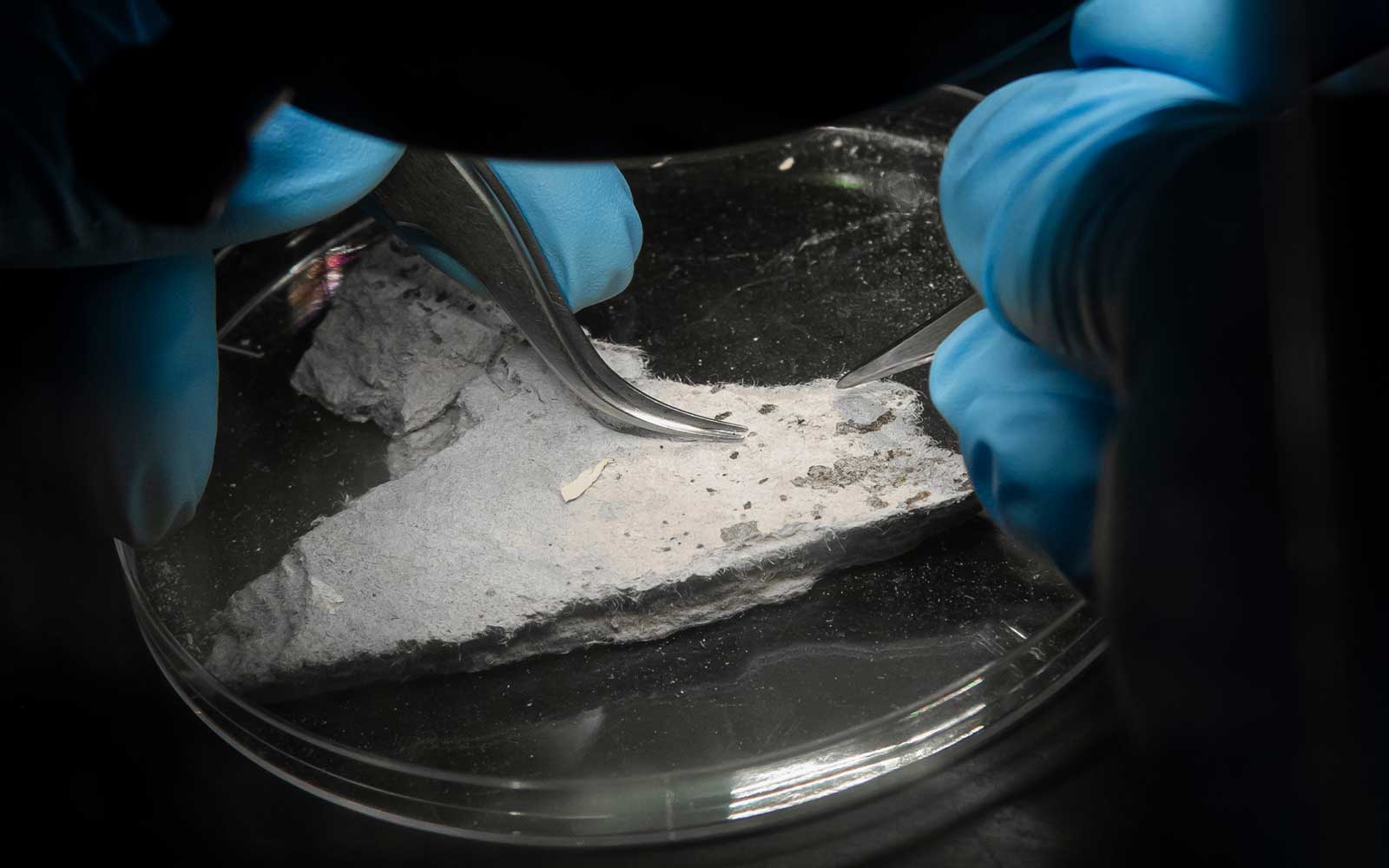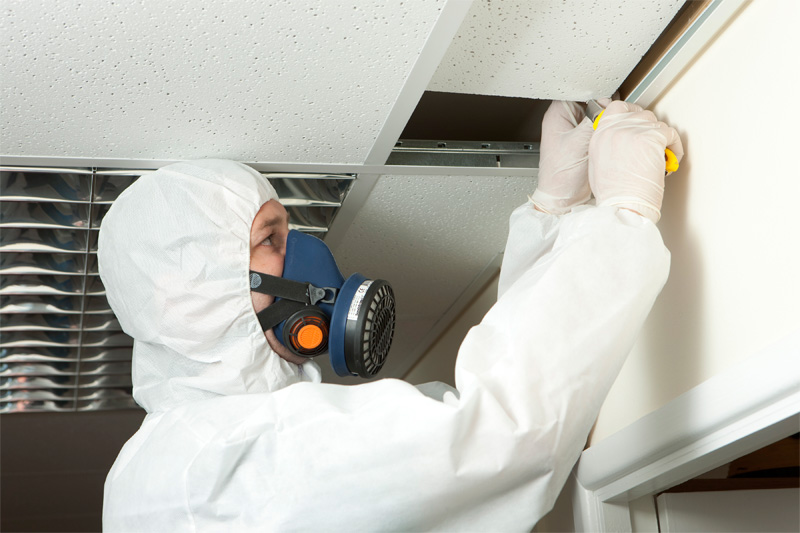The Complete Process of Accredited Asbestos Testing to Ensure Property Compliance
In the realm of property monitoring and compliance, the process of approved asbestos testing stands as a crucial part to guarantee the safety and wellness of residents. From the first evaluation to the final analysis of results, each phase plays an important duty in figuring out the presence of asbestos within a building.
Accredited Asbestos Testing: First Evaluation
In conducting the preliminary assessment for recognized asbestos testing, a meticulous evaluation of the residential property's materials is imperative to precisely recognize prospective asbestos-containing products. This crucial action involves aesthetically checking all areas of the building, consisting of ceilings, wall surfaces, floor covering, insulation, and other structure materials that might harbor asbestos. Special focus is given to materials that are vulnerable to harm or disturbance, as these circumstances can launch harmful asbestos fibers into the air. In addition, sampling of thought products might be essential to confirm the existence of asbestos with research laboratory analysis.
Approved asbestos assessors adhere to rigorous methods established by regulative bodies to make sure the precision and dependability of the screening process. By carefully documenting findings and utilizing advanced screening approaches, assessors can provide homeowner with a detailed report detailing the presence of asbestos, if any kind of, and the advised steps for mitigation or elimination. This first evaluation sets the structure for succeeding actions to resolve asbestos problems and make sure the security and compliance of the property.
Example Collection Procedures for Asbestos Testing
Reliable sample collection treatments are necessary in making sure accurate asbestos screening results and compliance with governing requirements. When collecting samples for asbestos screening, it is important to adhere to rigorous procedures to minimize the danger of contamination and ensure the dependability of the outcomes.
Firstly, it is vital to determine the believed asbestos-containing materials (ACMs) and prioritize tasting locations based on variables such as the material's condition, access, and potential for disruption. Asbestos Testing. Examples should be gathered from numerous locations within the home to give a comprehensive evaluation of asbestos visibility
During example collection, licensed professionals must wear suitable personal safety tools (PPE) to protect against asbestos exposure. They have to use clean tools, such as disposable handwear covers and plastic bed linen, to avoid cross-contamination between samples. Samples should be very carefully accumulated making use of a defined strategy, such as damp cleaning or coring, and securely secured in airtight containers to preserve their integrity during transportation to the research laboratory for evaluation.
Laboratory Analysis Process for Asbestos Examples
Upon conclusion of the example collection procedure, the asbestos examples are thoroughly moved to approved research laboratories for careful analysis. At the lab, trained professionals take care of the examples with extreme like prevent any type of cross-contamination or example destruction. The first action in the research laboratory evaluation procedure is example prep work, where the collected samples are carefully refined to draw out the asbestos fibers. Asbestos Testing. This visit step is essential to guarantee accurate outcomes in the succeeding analysis.

As soon as the analysis is full, a comprehensive record is generated, outlining the findings and confirming whether asbestos exists, the sort of asbestos fibers determined, and the focus levels. This details is essential for homeowner to take the necessary actions to make certain compliance with asbestos laws and secure the wellness of residents.

Coverage and Analysis of Asbestos Test Results
Certified asbestos screening labs offer thorough records that provide critical insights into the visibility, type, and focus degrees of asbestos fibers located in samples collected from residential properties. These records are important for homeowner and supervisors to understand the risk positioned by asbestos and make notified decisions concerning its monitoring or elimination. The records commonly include information on the methods used for testing, the locations from which samples were taken, the sort of asbestos identified (such as chrysotile, amosite, or crocidolite), and the concentration degrees of asbestos fibers found.
Analyzing these outcomes calls for proficiency to assess the potential health risks related to asbestos direct exposure, establish the ideal strategy, and make sure regulative compliance (Asbestos Testing). Depending upon the findings, recommendations might vary from continued monitoring and maintenance to encapsulation or full asbestos reduction. Homeowner ought to thoroughly evaluate these reports and talk to asbestos experts to develop a comprehensive prepare for attending to any type of asbestos issues recognized
Making Sure Home Compliance With Asbestos Rules
To maintain adherence with asbestos guidelines, property owners need to carefully apply steps to make sure conformity with applicable laws and guidelines. When asbestos is recognized, property owners should comply with asbestos monitoring intends that outline proper control, removal, or encapsulation procedures to avoid exposure and official statement spread of asbestos fibers.
Building proprietors need to provide asbestos awareness training to employees and residents to reduce the danger of asbestos exposure and guarantee appropriate handling of materials that may have asbestos. Additionally, it is crucial to stay informed concerning any kind of updates or adjustments in asbestos laws to readjust administration methods appropriately. By proactively dealing with asbestos compliance requirements, residential or commercial property owners can produce a risk-free atmosphere for occupants and mitigate possible lawful and health and wellness risks related to asbestos direct exposure.
Final Thought
Finally, certified asbestos testing is an essential process for making certain residential property compliance with regulations. The first analysis, sample collection treatments, lab evaluation, and interpretation of results are all crucial actions in this procedure. By complying with these procedures, homeowner can recognize and attend to any asbestos threats present, protecting the health and wellness of owners and preserving conformity with regulative needs.